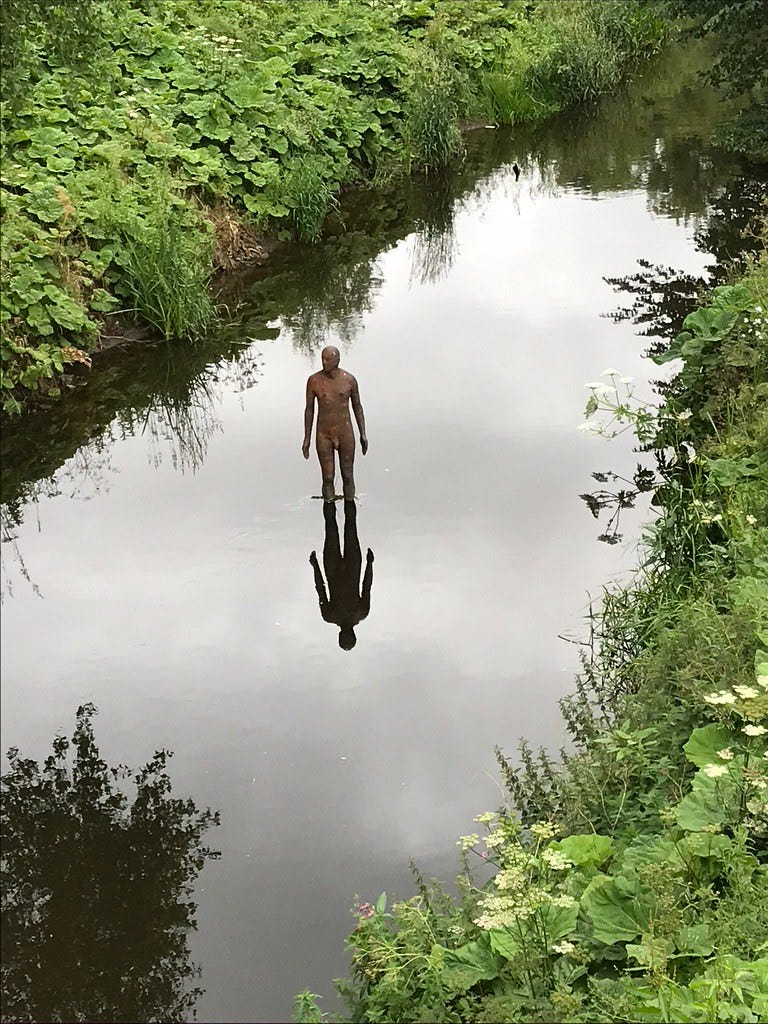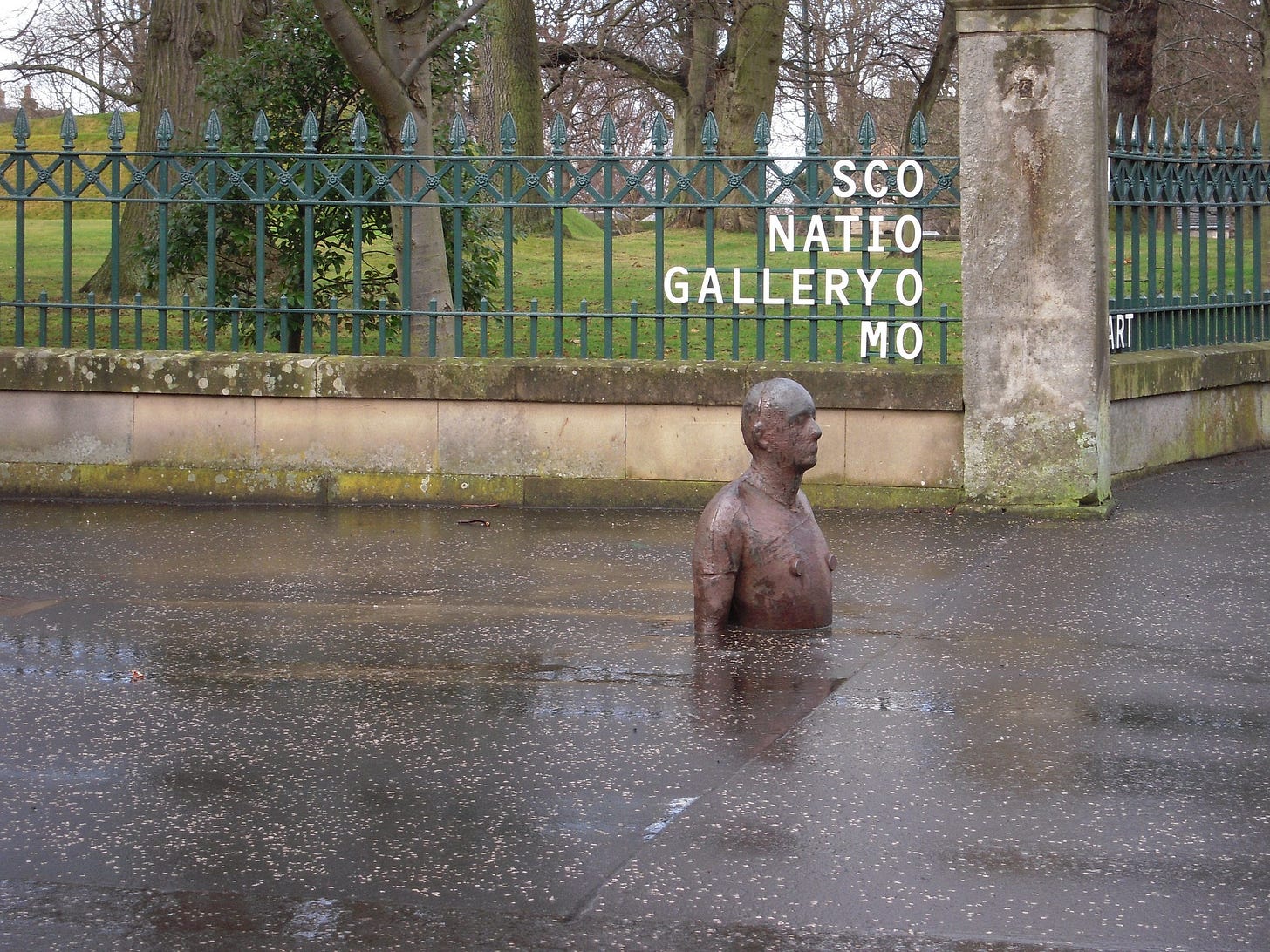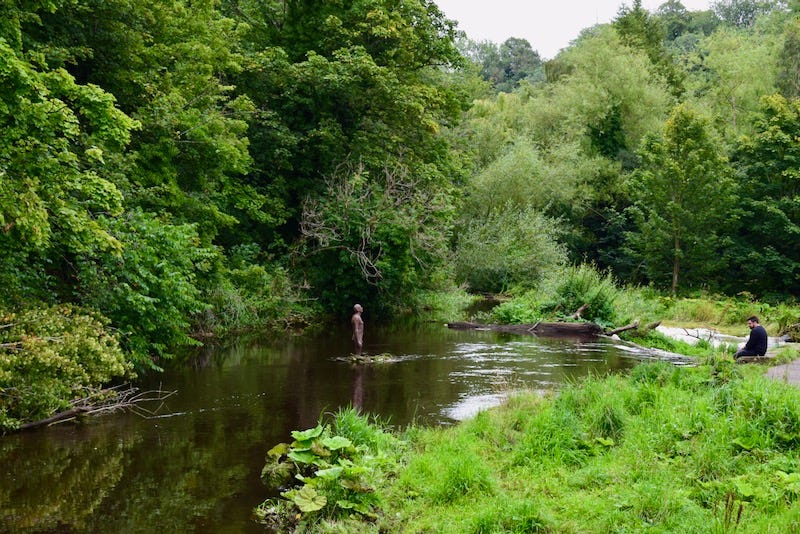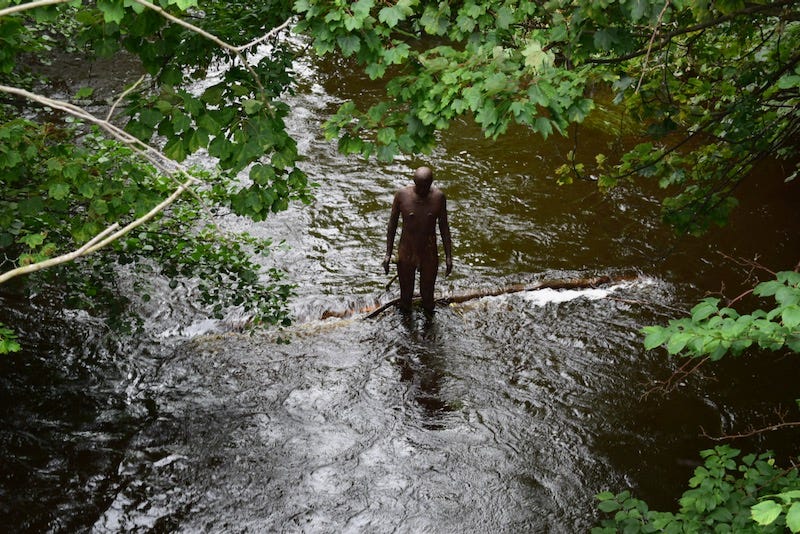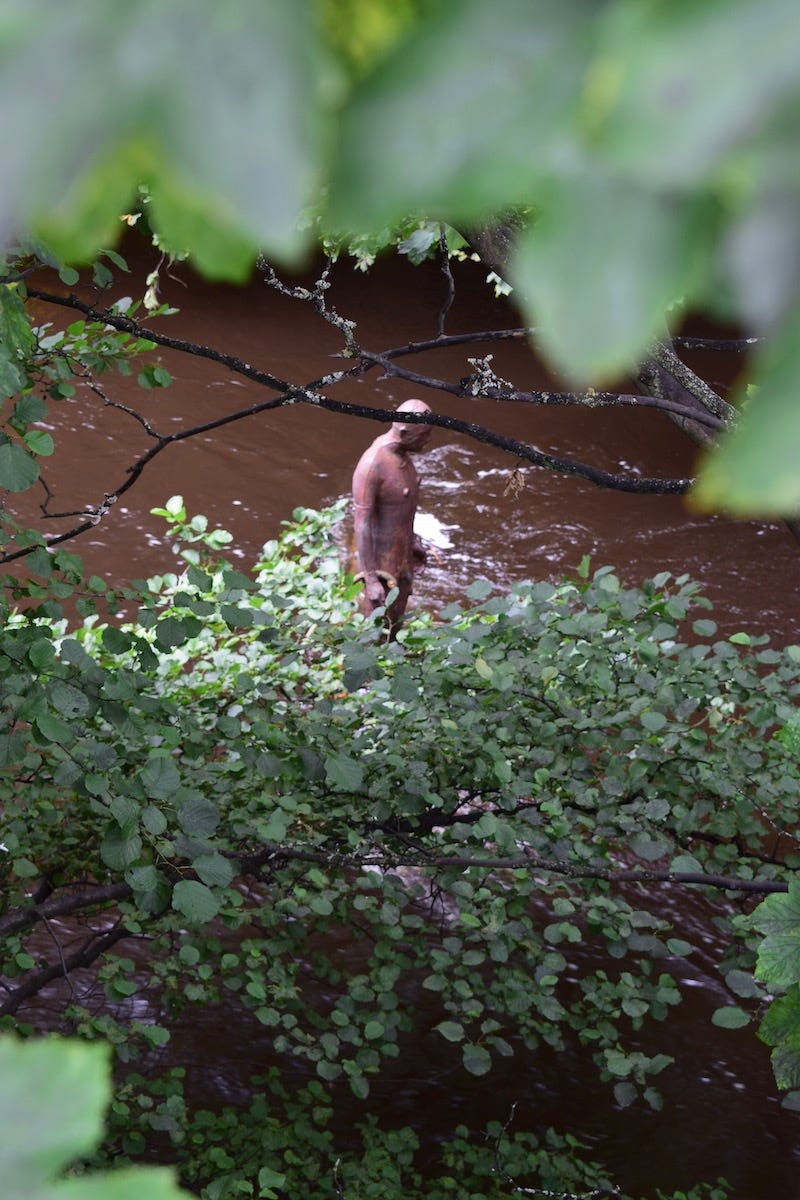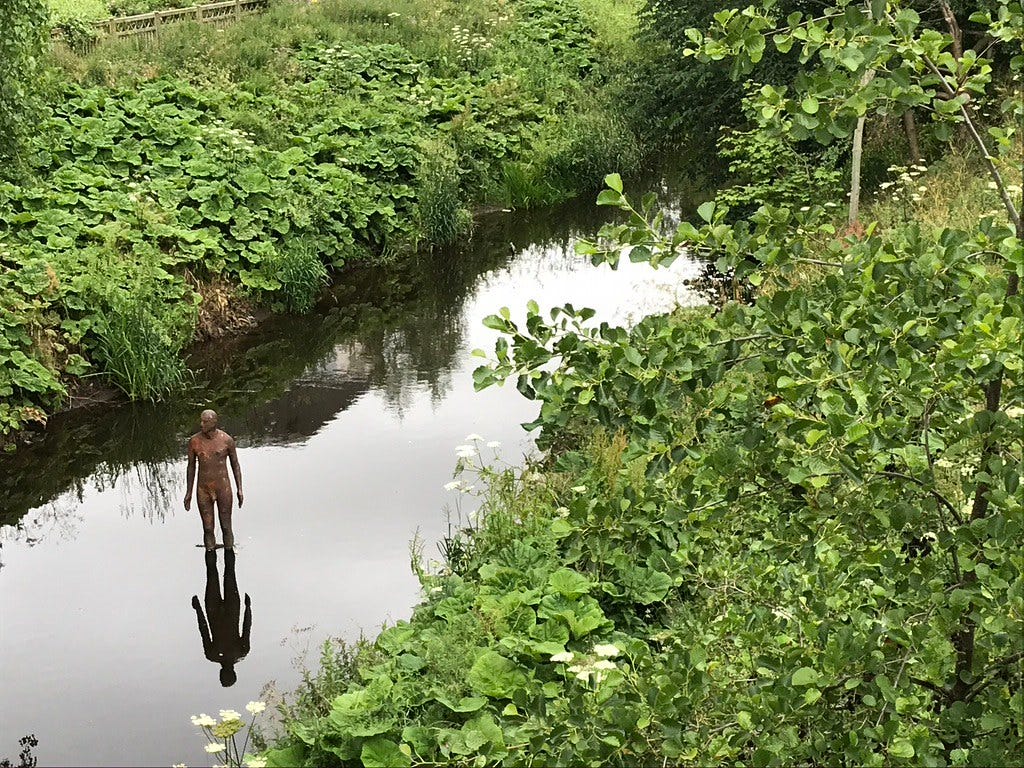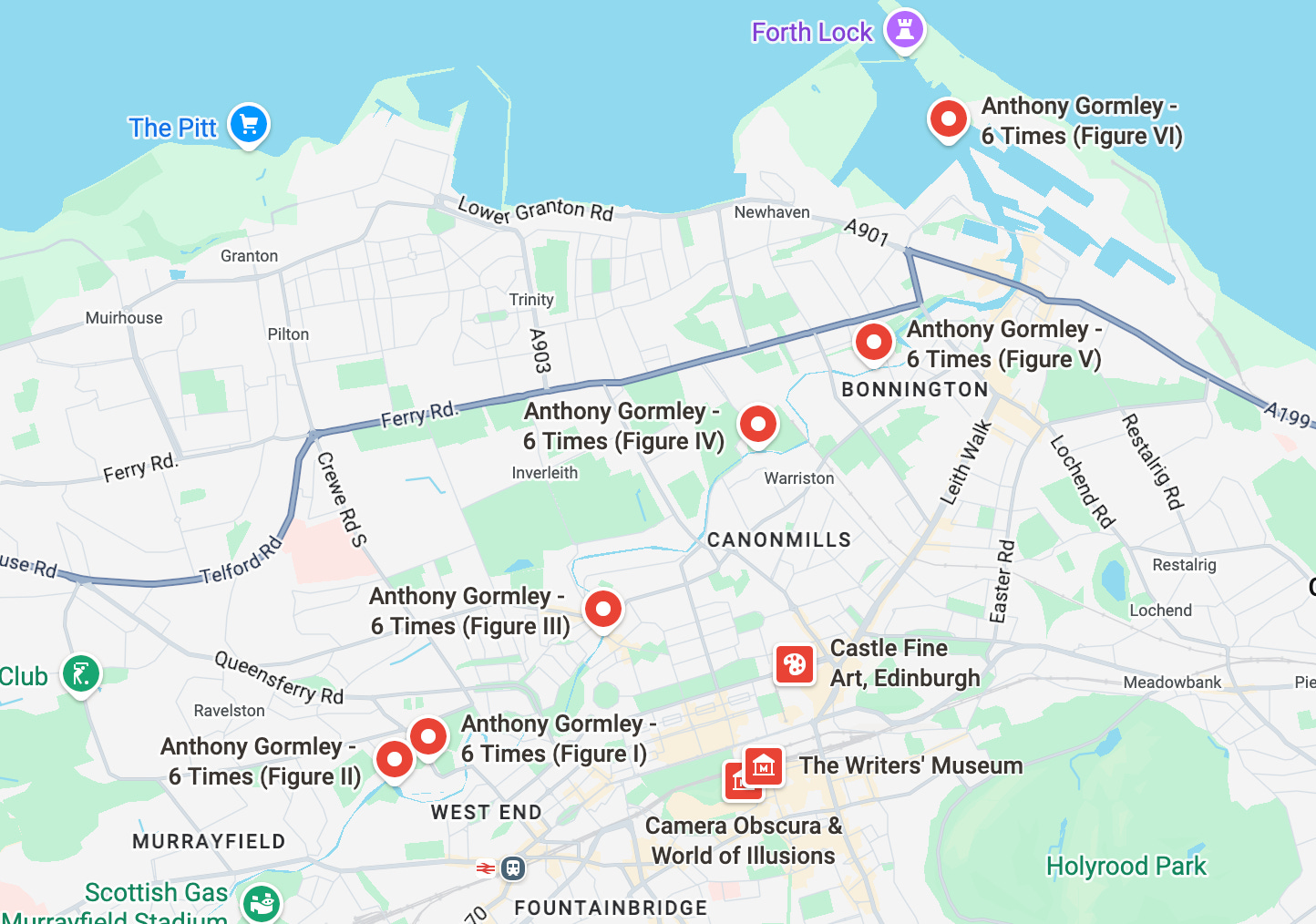Antony Gormley in Edinburgh
Water of Leith sculpture trail
6 Times
6 Times is a sculpture project running through the heart of Edinburgh.
Six life-size figures mark out a watery walking route from the Scottish National Gallery of Modern Art to the sea. Each figure, the familiar Antony Gormley shape and gaze, looks in a slightly different direction en route. The first and last figures of the sequence are compelled to gaze out towards the sea. They may be cast in iron and appear stoical, but they also seem vulnerable, or perhaps stuck, or wishing to move forwards to the sea – perhaps back to the sea? All are eroding in different ways from the elements and environment they are placed in.
The artist questions how humans fit into the urban environment and adapt to the natural landscape. Our interaction with human forms, the space around them, nature and weather is shown to us through these sculptures and perhaps we read them in different ways based on our own experience. Are they happy, frightened, excited, bored, lost, found? It’s open to interpretation.
“I’ve never been interested in making statues, but I have been interested in asking what is the nature of the space a human being inhabits. What I try to show is the space where the body was, not to represent the body itself.” – Antony Gormley
Water of Leith
The Water of Leith river runs from the Pentland Hills flowing north through Edinburgh to the Firth of Forth. Once lined by mills powered by the water, humans have reacted to its environment for centuries. The river has incorporated both the natural and the manufactured for centuries and its water once was deemed to have healing benefits.
A riverside path runs from Balerno to Leith waterfront and is maintained by Water of Leith Conservation Trust. It is a designated Urban Wildlife Site with herons, mallards, swans, bats, tree creepers and owls spotted along the route. The walk along the Water of Leith is a 12 mile (20km) stretch and a great way of walking across the city without negotiating city traffic.
The Antony Gormley figures first appeared in Edinburgh in the summer of 2010, commissioned by the Scottish National Gallery of Modern Art for £380,000, with support from the Art Fund Gulbenkian Museum of the Year Award 2004, Clare Enders and The Henry Moore Foundation and as part of the National Gallery of Scotland collection.
Follow Antony Gormley’s 6 Times art trail
Each full-bodied cast-iron figure gazes towards the direction of the distant point where the river meets the sea.
Figure I: Gallery of Modern Art
This easy-to-spot figure is buried to the waist in tarmac outside the entrance to the Scottish National Gallery of Modern Art in Belford Road. Easy to spot, yet easy to trip up over and easy to sit on their shoulders if you have a yearning – many do!
Figure II: Bell’s Mills
Situated in the water, the figure looks skywards, close to where the Scottish National Gallery of Modern Art connects to the Water of Leith at Bell’s Mills. There has been a mill on this site since the 11th Century, the last one turning sawdust into wood flour until 1971.
Figure III: Stockbridge
Situated in the water near the bridge at Deanhaugh Street, Stockbridge. This figure looks downwards through the bridge. You can get the clearest view from the bridge.
Figure IV: Powderhall
Situated in the water near St Mark’s Park and gazing down the river to its right hand side. Powder Hall was a mansion built in early 18th Century, taking its name from the gunpowder mill situated there c1695. It is also the site of the old Powderhall athletic stadium built c1870, converted to greyhound racing and motorcycle speedway until 1999.
Figure V: Bonnington
Situated in the water near Newhaven Road. The figure gazes leftwards. Once named Bonnytoun, this former mill village. Some buildings still remain from the 17th Century. You can still find an old waterwheel at Bonnington Mill.
Figure VI: Leith Docks
Situated at the end of an abandoned, ruined pier at Western Harbour near Ocean Terminal, gazing out to the point where the river meets the sea, at the mouth of the harbour. It can be seen by cruise ship passengers coming in to Edinburgh to dock. Both the pier and the cast iron figure are altered by the elements. Alone. Anonymous. Determined and resolute despite a load of bird crap dumped over its head over time. Tethered human, tethered boat, human versus boat.
Cast-iron dimensions: lifesize. Each: 191 x 50 x 36 cm
Some went missing for several years. What happened to them?
Four out of the six figures had to be put in storage indefinitely for a number of years. The ones situated in the Water of Leith were pushed over by high tides after heavy rainfall in summer 2010. They are hinged at the base to collapse and secure them during bad weather and high tides. However, the hinges constantly toppled the sculptures which were then unable to stand up again as they should when the water pressure falls.
Whilst a flood prevention scheme was being discussed, the figures were considered too expensive to maintain in the water and were put into safe storage indefinitely until an alternative solution could be found. So, only Figure I and VI remained in place for several years while talks continued about how to reinstate the missing figures to the Water of Leith. Now they are back in place permanently.
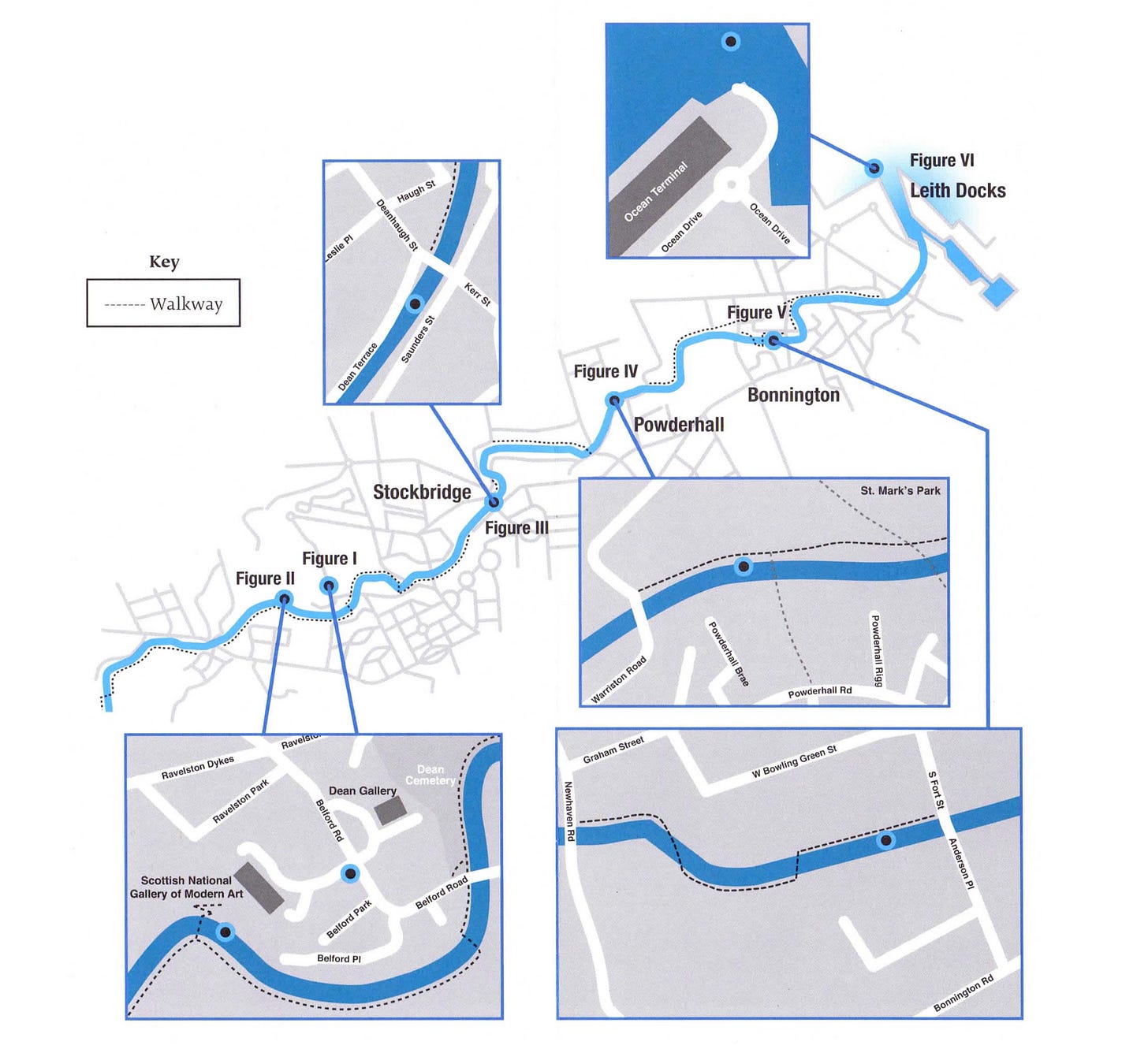
“Every landscape has a hidden social dimension to do with both its natural usage and the politics of territory. And I do like the idea that attempting to ask questions about the place of art in our lives reveals these complex human and social matrices.” – Antony Gormley
Antony Gormley is best known for his Angel of the North sculpture in Gateshead and Another Place at Crosby Beach in Merseyside. Some other Gormley projects are located in Stavanger, Cuxhaven, Vorarlberg and New York.
More Antony Gormley in Scotland:



